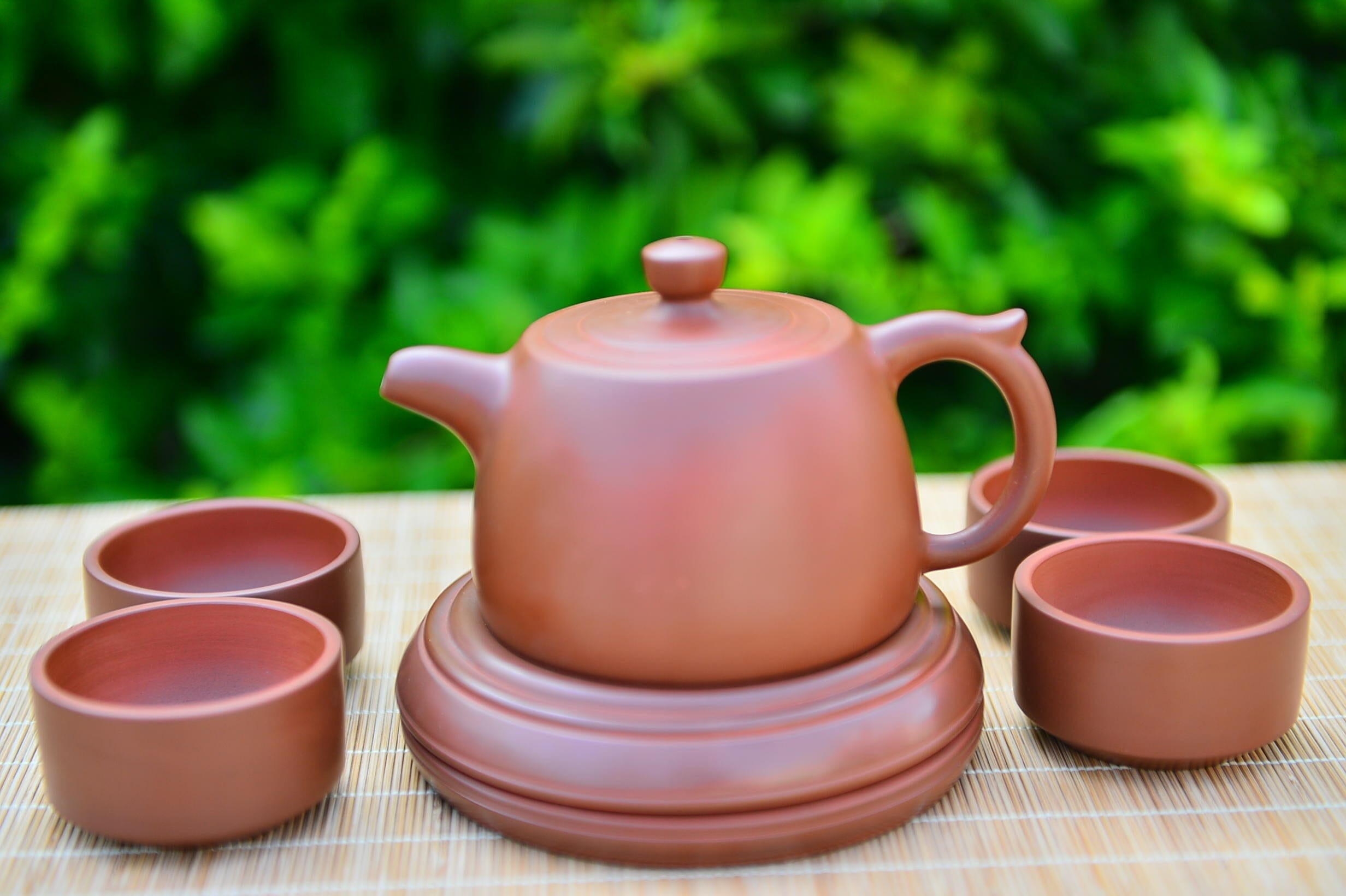Tea brewing is a Chinese invention and a turning point in the development of Chinese tea culture, driving the growth of tea utensils, tea ceremony, tea art, and tea culture. There are various ways to brew tea, and a multitude of tea utensils, each with its own unique features. In the hands of tea enthusiasts, different tea utensils can bring out different flavors of tea. The purple clay teapot has always been the most cherished tea utensil among tea lovers, while the Tenmoku has emerged as a "dark horse" among tea utensils in recent years. Brewing tea in a purple clay teapot and drinking it from a Tenmoku has become the most popular lifestyle nowadays.
The beauty of purple clay teapot lies in its form, spirit, qi, and posture.
Form refers to the outline, or the appearance of the teapot; spirit refers to the charm that can be perceived and appreciated; qi refers to the temperament, the essential quality contained in the craftsmanship; and posture refers to the various postures, such as tall, short, fat, thin, rigid, soft, square, and round.
The practical beauty of Tenmoku lies in its color, liveliness, warmth, and elegance.
- After the tea soup is poured into the Tenmoku, the patterns on the Tenmoku and the tea soup complement each other, shining with changing colors under the refracted light source, sometimes blue, sometimes gold, sometimes silver, vivid and beautiful. Moreover, after being nourished by the tea soup for years, the Tenmoku can emit a colorful and lustrous glow.
- The high iron content of Tenmoku can have the effect of revitalizing and softening water. Friends who often use Tenmoku to drink tea know that the tea tastes much softer and sweeter when brewed in a Tenmoku.
- Cai Xiang praised in his book "The Record of Tea" that "the embryo is slightly thick, and it is difficult to cool down after being heated for a long time", meaning that using Tenmoku to drink tea can maintain the temperature and taste of the tea for a long time.
- The elegance of Tenmoku lies in its simplicity and antiquity, bringing tranquility and simplicity. Its natural state harmonizes with the Zen of tea.
Both Tenmoku and purple clay teapot are the pinnacle representatives of Chinese porcelain art. The shape of Tenmoku has not changed much, and its artistic value mainly lies in the various magical patterns naturally formed in the kiln, such as hare's fur, oil droplets, and color changes. It has been praised by countless porcelain lovers from ancient and modern times, both in China and abroad. Japan has only collected 8 pieces of Chinese porcelain, of which 5 are tea bowls used for drinking tea, and 4 of them are Tenmoku, which shows the extremely precious artistic value of Tenmoku.
The artistry of purple clay teapot is more comprehensive, emphasizing the four elements of form, spirit, qi, and posture. Form refers to the beauty of form, which refers to the outline and concrete appearance of the work; spirit refers to the charm that can be perceived and experienced, conveying a spiritual beauty; qi refers to the beauty of temperament, the essential quality contained in the craftsmanship; posture refers to the various postures of the work, such as tall, short, fat, thin, rigid, soft, square, and round.
Tenmoku and purple clay teapot are both handmade works of folk artists, and their raw material formulas and production processes are completely based on ancient techniques. Although industrial teapots have emerged in modern times, they are still in the minority, and most craftsmen are extremely serious and rigorous in their work.









Share:
Tenmoku's pore misunderstanding fully resolved
Why did we embark on the journey of Jianzhan appreciation?